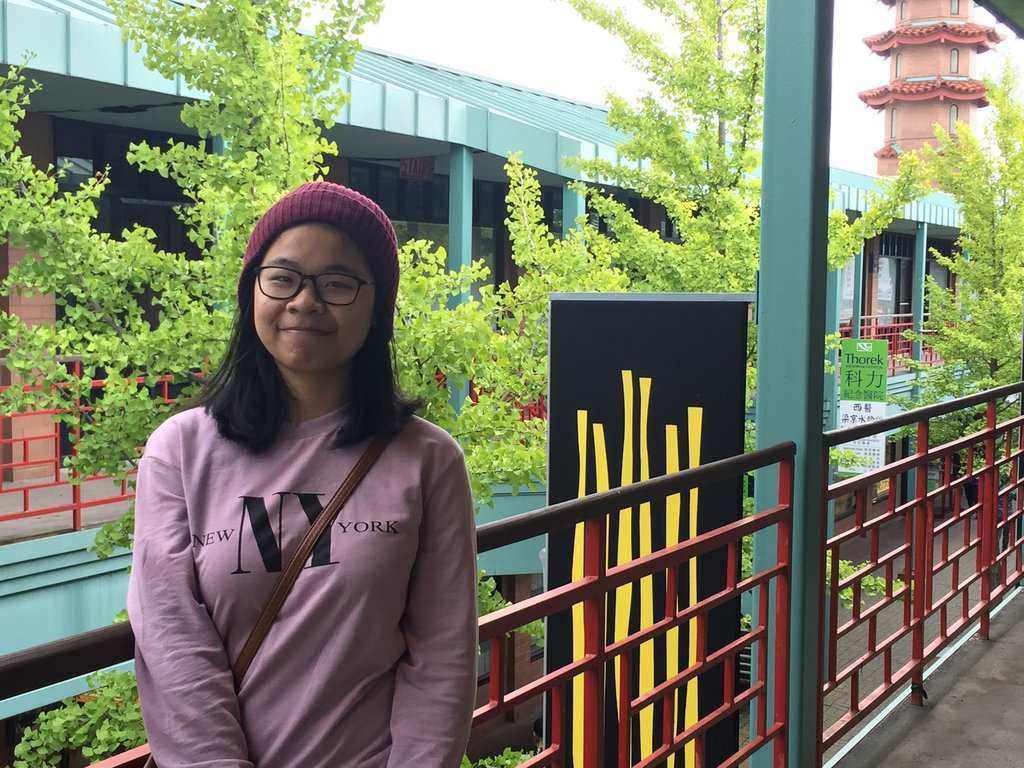By Jingzhe (Kelly) Wang
Heading west from 24th Pl. and Princeton Ave. in Chicago’s Chinatown, Haiting Yu walks through an underpass with rusty-looking infrastructure and cracks on the wall. A few feet into the tunnel, a light blinks. Some are completely out.

Feeling water dripping down from above, Yu picks up her pace.
“You have to be careful when you cross the underpass, especially at night,” she says. “People will take your bags.”

That’s not the image most Chicagoans and tourists have of Chinatown. To them, it’s a vibrant ethnic neighborhood – restaurants serving tasty dim sum, the Zodiac statues in Chinatown Square, and elderly Chinese playing chess or mah-jongg in parks.

Yet 1,300 local residents indicated in a neighborhood survey that safety is their top concern.
The Coalition for a Better Chinese American Community (CBCAC) is an advocacy group based in Chinatown that conducted the survey in 2014. The coalition drove home the ongoing concern at a recent gathering to reinforce their Chinatown Community Vision Plan that was put forward a year ago.
Ald. Patrick Thompson (11th ward), one of two aldermen who represent Chinatown, agreed that public safety was a major issue for the community.
“The perception is that it isn’t safe because when we do have certain instances with robberies and things like that,” Thompson said, “it’s a big concern for us.”
For Haiting Yu, she considered Chinatown a friendly and convenient place for new Chinese immigrants when her family immigrated to Chicago from Hong Kong in February. Yu’s perception changed not long after when she found syringe needles near her garbage bins in the back alley.
“That’s when I realized that there might be people doing drugs right behind my house,” Yu said. “We almost moved to somewhere else.”
Chinatown is considered a safe neighborhood statistically; only 113 violent crimes were reported in Armour Square, the community area that encompasses Chinatown, so far this year. That amounts to 0.6 percent of all violent crimes reported in Chicago, according to data from Crime in Chicagoland.
Bridgeport, a nearby South side area, has a similar frequency of violent crimes (102). In comparison, Englewood, also on the South side, experienced 563 cases so far this year.
However, Debbie Liu, community development coordinator at CBCAC, said the numbers could be misleading because Chinatown residents tend not to report crimes to the police.
“They don’t speak the language, so they feel very uncomfortable having to deal with that,” Liu said.
Yu, who is taking English as a Second Language (ESL) courses, works part-time at Feida Bakery in Chinatown. Some of her weekend shifts go until 8 p.m.
“My coworkers told me to run home immediately after work,” Yu said. “Especially in winter, the streets are pretty much empty after 6.”
Community leaders said members of the Chinese community are targets for robbers because they are known to carry cash around and to not speak up to the police.
CBCAC is working to address these difficulties and ease the community’s safety concerns by improving lighting in parks and along sidewalks and organizing more activities in the neighborhood.
There was one time when Yu felt safe in Chinatown.
“When Pokemon Go was popular, there were so many people out,” Yu said. “That’s when I felt the safest walking around at night.”
Save

